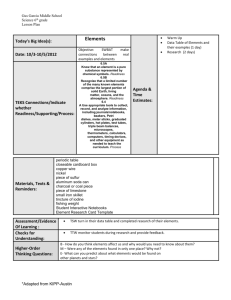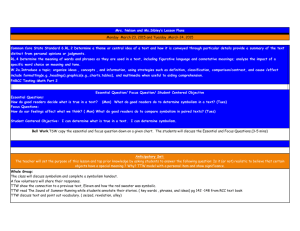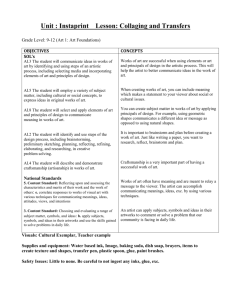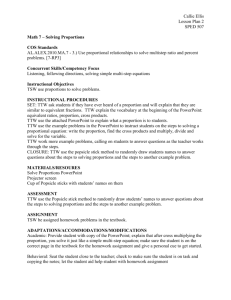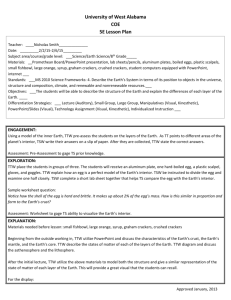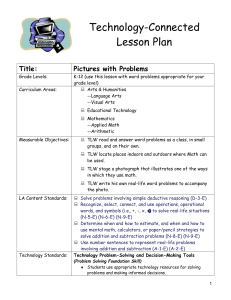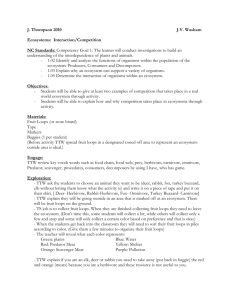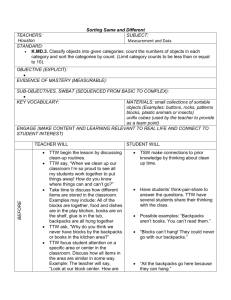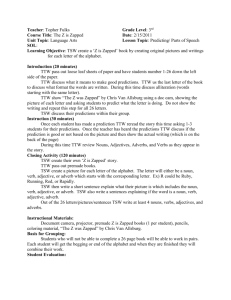Lesson Plan Contest (Plessy vs. Fergusson) Name: Sarah Gregoire
advertisement
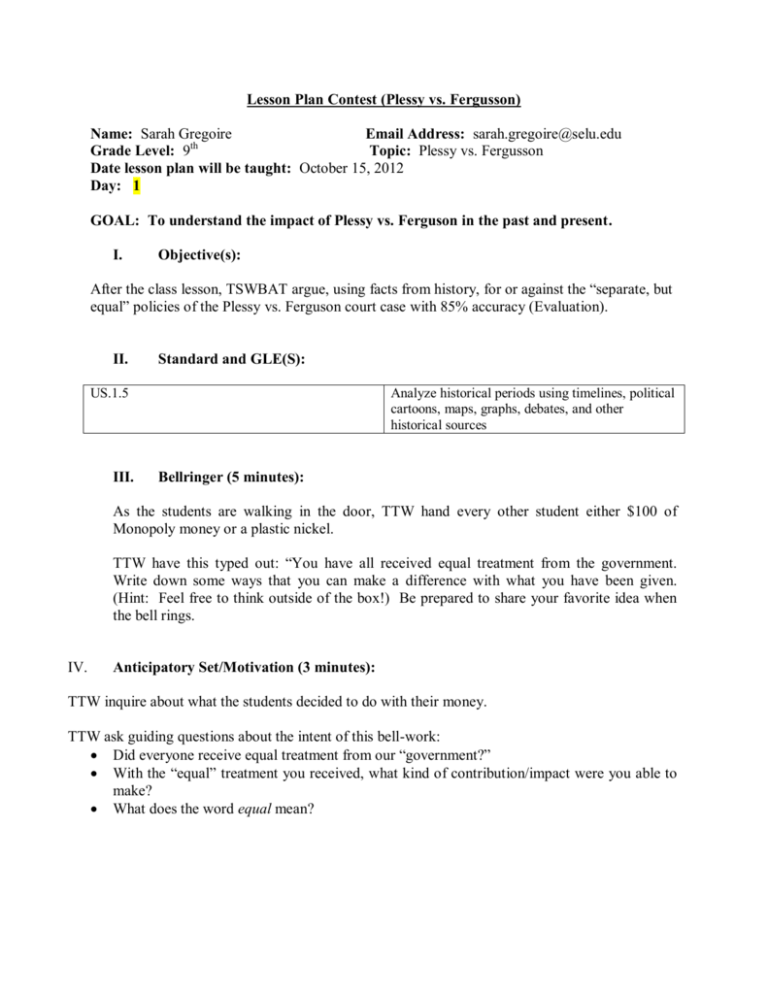
Lesson Plan Contest (Plessy vs. Fergusson) Name: Sarah Gregoire Email Address: sarah.gregoire@selu.edu th Grade Level: 9 Topic: Plessy vs. Fergusson Date lesson plan will be taught: October 15, 2012 Day: 1 GOAL: To understand the impact of Plessy vs. Ferguson in the past and present. I. Objective(s): After the class lesson, TSWBAT argue, using facts from history, for or against the “separate, but equal” policies of the Plessy vs. Ferguson court case with 85% accuracy (Evaluation). II. Standard and GLE(S): US.1.5 III. Analyze historical periods using timelines, political cartoons, maps, graphs, debates, and other historical sources Bellringer (5 minutes): As the students are walking in the door, TTW hand every other student either $100 of Monopoly money or a plastic nickel. TTW have this typed out: “You have all received equal treatment from the government. Write down some ways that you can make a difference with what you have been given. (Hint: Feel free to think outside of the box!) Be prepared to share your favorite idea when the bell rings. IV. Anticipatory Set/Motivation (3 minutes): TTW inquire about what the students decided to do with their money. TTW ask guiding questions about the intent of this bell-work: Did everyone receive equal treatment from our “government?” With the “equal” treatment you received, what kind of contribution/impact were you able to make? What does the word equal mean? V. Statement of Objective TTW say, “Today we’re going to define equal through the eyes of 19 and 20th century politics. We’ll specifically be looking at the Plessy vs. Ferguson court case of 1896. Throughout today’s lesson, I encourage you to inquire and interject.” VI. Introduction: (45minutes for various activities) a. Viewing of Plessy vs. Ferguson cartoon (10 minutes) (See Only Attachment) TTW begin the lesson with a snapshot of what the Plessy vs. Ferguson case is about. TTW pull up the cartoon and talk it through with the students. TTW explain what the “separate but equal” clause is about. TTW reinforce the fact that Homer Plessy was only 1/8 th black. TTW return to this “equal” term. TTW ask: Based on what we’ve discussed in previous classes about the modern day justice system, how would a case like this one hold up in today’s courts? How would things be different? How would they be the same? b. Input (15 minutes) TTW introduce the class to the history behind Plessy vs. Ferguson. TTW talk about segregation in the south--TTW show (http://historymartinez.wordpress.com/2011/04/19/plessy-v-fergusonsupreme-court-case-separate-but-equal-doctrine-powerpoint/) images from the time (mute sound). While she is talking about these images, TTW begin to introduce the Plessy vs. Ferguson case. TTW show the class the original newspaper article from the Library of Congress (http://chroniclingamerica.loc.gov/lccn/sn86069395/1896-05-26/ed-1/seq5/;words=separate+coaches+SEPARATE+COACHES ). As a class, we will take a look at this article. c. Assignment Explanation (2 minutes) TTW have students complete a KWL chart for the Plessy vs. Ferguson case. Requirements: Every KWL chart must include the facts from the original story. d. Activity (18 minutes): First, TSW create charts individually. After ten minutes, TSW find a partner and compare charts. As a group of two, these students will work together to create a KWL chart or decide on one of the two charts to share with the class. During the next class period, students will share their group’s KWL chart on the document camera. VI. Closure (2 minutes): As a ticket out of the door, TSW write a reflective journal entry on today’s lesson. TTW prompt students with the following questions: Put yourself in Homer Plessy’s position, what would you do? Would you conform to what society said was “equal (Evaluation)?” Define the word equal in 1896. Define the word equal in 2012. How are they different? How are they the same (Analysis and Comprehension)? VII. Assessment/Evaluation (50 approximate minutes): Formative and Summative Throughout the introduction, TTW monitor student facial expressions as a formative assessment of her students’ attitudes toward the content. By prompting students with questions, TTW be able to assess how well students comprehend the material that she is covering. The final formative assessment of the day will include a ticket out of the door exercise in which TTW ask the student to write a reflective journal entry. This will not be taken for a grade, but will merely provide the teacher with information regarding the day’s objective and goal. At the end of the section, TTW summative-ly assess her students in the form of a test. VIII. Materials: Student: Notebook Pencil/Pen IX. X. Teacher: Roster Lesson Plan References/Resources Loc.gov http://historymartinez.wordpress.com/2011/04/19/plessy-v-ferguson-supreme-courtcase-separate-but-equal-doctrine-powerpoint/ Accommodations/Individual Differences: TTW comply with all IEP’s. TTW be sure to verbally emphasize key facts several times for the auditory learners. TTW allow students to work with voki.com (tactile learners). TTW be sure to include pictures and cartoons for visual learners. TTW use proximity, with-it-ness, and routine to keep her students on task and focused. XI. Integration of Technology into Planning or Implementation Microsoft Word Internet SMART Podium Document Camera
